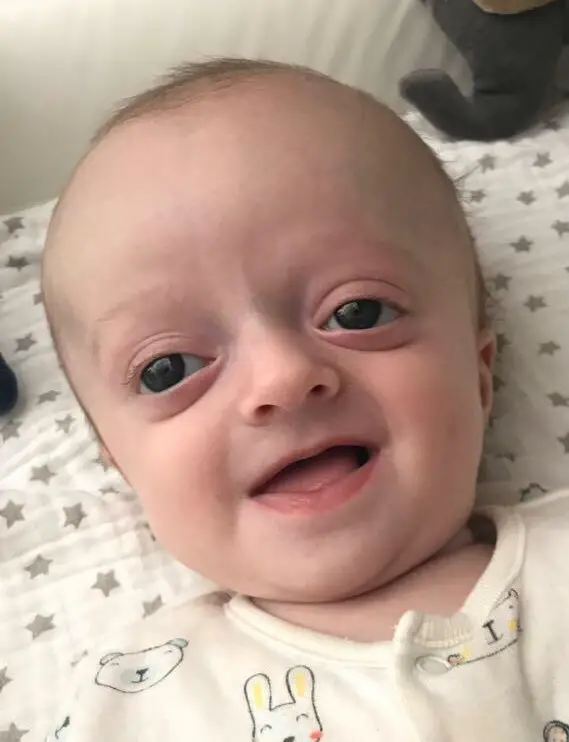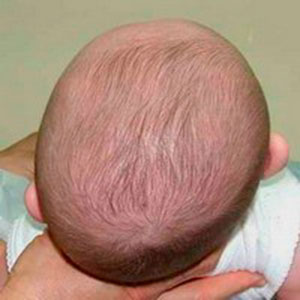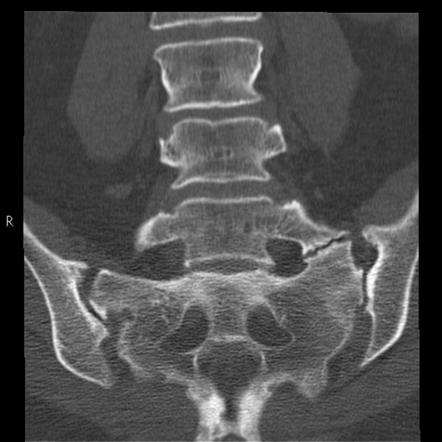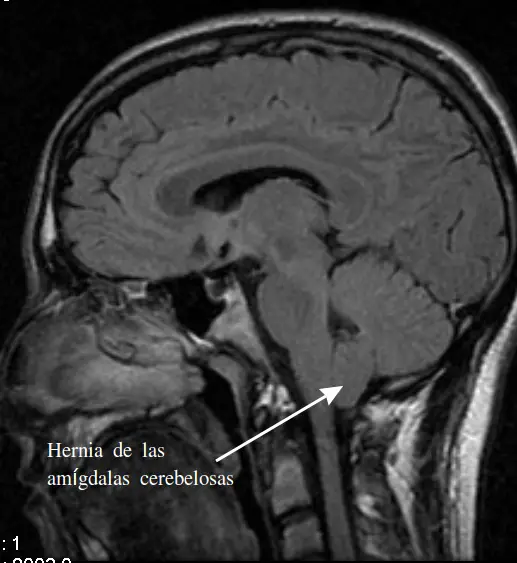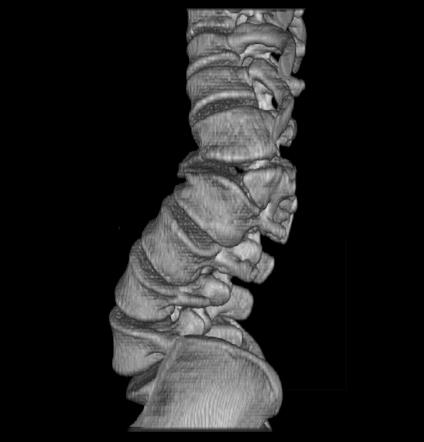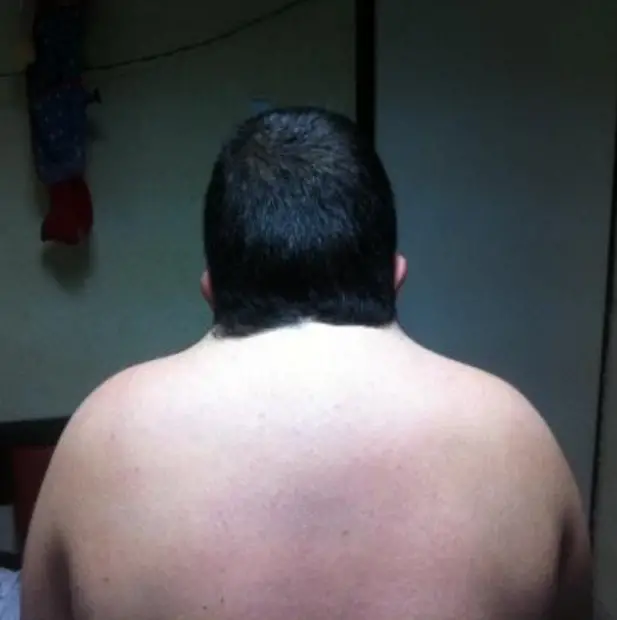Affecting 1 newborn in 100 in France, Apert syndrome is a worrying pathology. It evokes a serious ophthalmological and neurological manifestation. Her supported lasts a long time and is quite complicated when the disease is not diagnosed in time. How is Apert syndrome treated? We give you the answer in this article.
Definition
Le Apert syndrome is a rare congenital malformation that is characterized by a deformation of the cranium and forehead. It is also marked by a deformity of the face.
This pathology associates the craniosynostosis, faciostenosis and membrane syndactyly of hands and feet (fusion of fingers and toes).
La craniosynostosis (deformation of the skull) occurs when the coronal sutures fuse together early, while the brain is still developing. Normal brain growth should occur simultaneously with skull growth, but this early closure will compress it.
faciostenosis, meanwhile, is a premature fusion of the sagittal sutures (at the level of the glabella to the fontanel). It causes compression of the frontal lobes of the brain.
The causes of Apert syndrome
Le Apert syndrome is a genetic disease. It appears following the mutation of the FGFR2 gene (fibroblast growth factor receptor-2) which is located on the q26 locus of chromosome 10. This gene plays, among other things, a role in the ossification of the cranial sutures, the development of the skin and skeletal development. After the mutation, bone metabolism increases and there is a disorder in bone synthesis.
The disease is transmitted hereditarily in an autosomal dominant mode. A parent who suffers from Apert syndrome has at least a 50% chance of transmitting it to their child.
In some cases, the mutation is sporadic. It occurs during the development of the sperm, egg or embryo. Excessive paternal age is an important risk factor. However, be aware that this often happens randomly.
Sources also revealed that the syndrome Commonly affects Caucasians such as Asians and African Americans. It affects as many boys as girls.
What are the symptoms of Apert syndrome?
Morphological signs of Apert syndrome
The disease is characterized above all by a cranial morphology in the shape of a tower and an anterior frontal bulge.
On the face, we observe:
- two widely set eyes with protruding eyelobes;
- papilledema;
- ptosis: lowering of the upper eyelid;
- a receding upper jaw;
- a deformity of the dental morphology;
- an incomplete cleft palate (in most patients).
At the level of the hands, the lateral phalanges merge. The phenomenon affects 4 fingers out of 5. The aspect of the hand is said to be “in mittens” or “in the hand of an obstetrician”. It's syndactyly. It also occurs in the feet.
Pathological symptoms
A person with Apert syndrome laughs and cries alternately. To this are added nervous and depressive crises.
It also presents a psychomotor development disorder which is expressed by abnormal gait.
The patient presents an ophthalmic abnormality which is characterized by visual impairment and blindness. Exceptionally, he encounters oculomotor paralysis.
He often finds it difficult to inhale, and sometimes he has difficulty breathing.
It also manifests neurological signs such as the unstable and latent cerebral suffering which is expressed by obnubilations, headaches and vomiting.
In infants, we perceive:
- persistent fontanelle tension;
- un language delay ;
- mental retardation whose condition is expressed according to the severity of the cranial malformations.
How is the diagnosis made?
Generally, the disease is observed at birth or during the first months of the baby's life. It is also possible that the doctor detects it during the ultrasound during pregnancy.
The doctor directs the diagnosis to the Apert syndrome when he sees several morphological anomalies in the child. However, to give a reliable verdict, it must go through various examinations.
It all starts with a series of interrogations concerning the medical history of the patient and his family. The objective is to look for traces of the syndrome in them.
Once the doctor confirms the disease, specific tests are prescribed to assess its severity.
- A neurological examination: to assess the intellectual level of the patient.
- An X-ray of the skull (front and profile): to observe the deformations.
- An MRI of the skull: to examine the state of the cerebral structure, the degree of fusion of the cranial sutures and also, the presence of accumulation of cerebrospinal fluid.
- An NFS (complete blood count).
- A karyotype analysis: to detect a genetic mutation.
- A transfontanelle ultrasound.
- An x-ray of the hands and feet (front and profile): to determine the cause of the fusion of the fingers and to establish the surgical treatment protocol.
What treatment for Apert syndrome?
Le Apert syndrome treatment is multidisciplinary because of the many anomalies it includes. This is largely based on surgical procedures.
The operations are useful in order to correct the unsightly disorders which affect the face, the teeth and the jaw. They are also recommended to avoid cardio-respiratory discomfort. To do this, bones or tissues that block the passage of air must be removed.
In order to avoid compression of the brain, malformations of the skull must be operated on between the age of 6 and 12 months.
The surgical techniques are diverse. They depend on the age of discovery of the malformation, neurological risks and ophthalmological problems of the patient.
To prevent neurosensory disorders, it is best to perform the operations before the age of 3 years. After this age, surgery is done only for the purpose of correcting the signs ofintracranial hypertension.
In the presence of a serious brain malformation and in the face of doubtful mental retardation, the practice of neurosurgery is prohibited.
Le treatment of syndactyly in Apert syndrome is long term, because it requires a lot of interventions. The care is done on a serious follow-up throughout the growth.
For the problem of optic atrophy, the patient needs biannual ophthalmological monitoring, and this, until the end of adolescence.
It should be noted that the delay in clinical observation of Apert syndrome complicates management, in particular neurosurgery.
Projects
https://www.ncbi.nlm.nih.gov/pmc/articles/PMC3617707/
https://fr.medicineh.com/78-apert-syndrome-symptoms-treatments-prognosis-35082


